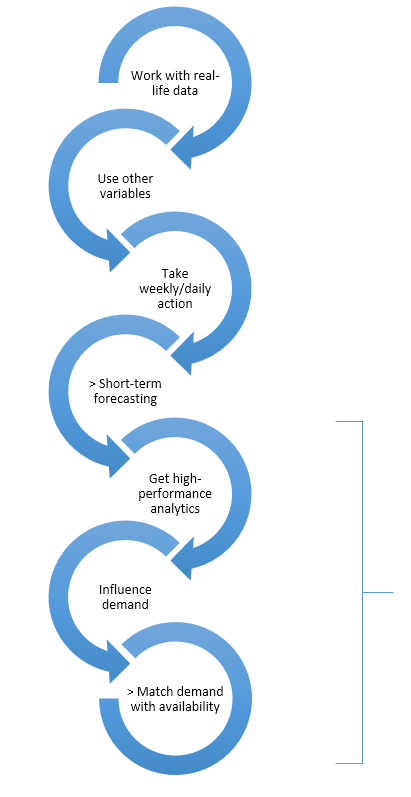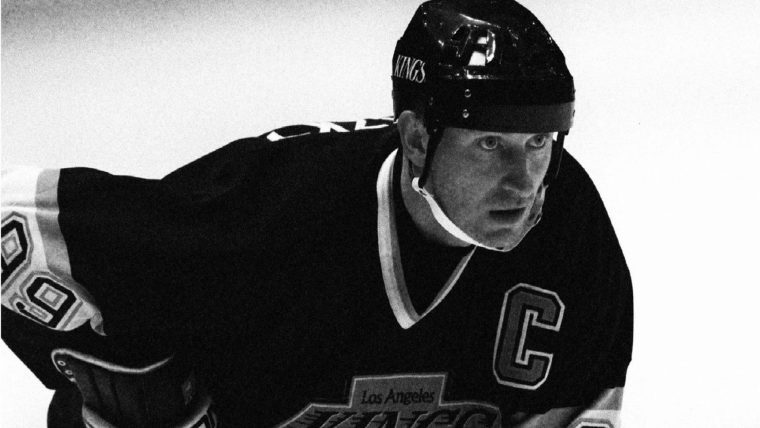
Forecasters, read (& steer) the game like Wayne Gretzky! (Part 2)
Anticipation and not leaning back are key if you want to be as successful at forecasting as Wayne Gretzky was at ice hockey. But as a dynamic forecaster in a world full of big data, you will need demand sensing to read the game and, subsequently, demand shaping to steer it.
A traditional forecaster working with static data tries to predict the future based on the past, which has a lot of drawbacks. In a future-proof environment, you should be able to make decisions based on the current realities of the supply chain or the current behavior of your customers.
Enter the game of dynamic forecasting…
…learn to read the game via demand sensing.
Demand sensing means you can detect demand signals indicating a change in demand patterns, which is a good complement to your traditional forecasting methods. For example:
- A manufacturer of packaged consumer products could consider retailers’ point-of-sale data to sense demand signals more quickly (new trends or peaks in demand).
Demand signals are any type of message issued in the supply chain or beyond to indicate that goods/services are required. For example:
- Short-term temperature forecasts for ice cream sales
- Macroeconomic factors for the building industry
- Retail data from a point of sale
If you can capture, monitor and process these demand signals dynamically based on real-life or near-real-life data, you will get a wealth of additional information to improve your demand planning and, thus, your supply planning.
New and other variables
The possibilities of new variables are extensive. In very advanced models, it could even be possible to use unstructured or big data that might correlate with the demand pattern. Examples include:
- Weather patterns
- Data on social media interactions, etc.
We see that forecast models often ignore this kind of information, whereas these variables can be very useful for quickly sensing demand signals to be able to adjust short-term forecasts.
Dynamic forecasting, the Gretzky way…
…read the game via demand sensing.
Learn to steer the game via demand shaping.
With demand shaping, you take the initiative to steer the game. You influence the demand for a product or service so that it better matches the available supply.
A cross-functional process.
Of course, demand-shaping activities shouldn’t cause increased demand volatility and uncertainty, e.g., demand peaks due to promotional offers. We should therefore introduce demand shaping as a cross-functional process, aligning both marketing and supply chain teams. Just like ice hockey, dynamic forecasting is a team sport. Because it’s only through collaboration that demand shaping can increase sales and thus revenue while at the same time aligning demand with available supply. Here are some examples:
- Setting up an additional promo when there is a surplus of components with a very high inventory cost to free up cash flow.
- Assessing the current demand patterns and where you can make some quick wins to smooth your demand patterns.
By making some smart choices, you can obtain a significantly smoother demand pattern, which is easier to match up with your supply.
Demand shaping becomes part of the demand-sensing model.
Ultimately, demand-shaping activities should be incorporated into demand-sensing models. These can have a fundamental impact on the demand pattern. By using high-performance analytics software with an increasing amount of data available, companies can try to estimate the impact of demand-shaping activities and integrate these into demand sensing.
Dynamic forecasting, the Gretzky way…
…read the game via demand sensing/steer the game with demand shaping.

Want to improve your demand management process and forecasting accuracy? Or curious to find out what demand sensing and shaping can mean for your organization? Get in touch!


